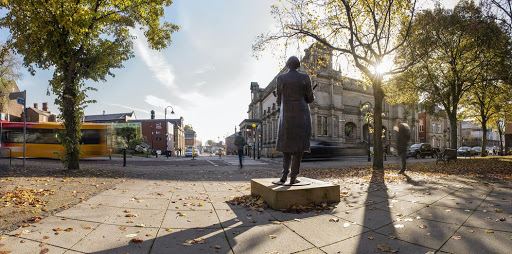Bury has been named as one of nine areas that will be the worst-hit by the coronavirus due to a “triple whammy” of having large numbers of elderly, high job losses and a lot of vulnerable children.
A report out today by the Institute for Fiscal Studies (IFS) put Torbay and the Isle of Wight top the table as the most vulnerable due to their elderly populations, reliance on tourism and hospitality, and pockets of socio-economic disadvantage.The other six are Blackpool, Northumberland, Dorset, Wirral, Gloucestershire and Lancashire.
Conversely Trafford and Stockport were identified as two of just 17 local authority areas likely to escape the harshest effects of Covid-19 because they have fewer older people susceptible to its worst effects, are less reliant on “shut-down” sectors like retail and hospitality and have fewer families with vulnerable children.
The study said that there is no simple North–South or urban–rural divide in the way that the COVID-19 crisis is affecting health, jobs and families across England. Areas whose residents look particularly vulnerable to the health effects are not in general the same as those likely to be hit hardest by job losses. Areas with more children at particular risk, because they are poor or have been referred to children’s services, tend to be different again.
The research finds that the balance between protecting public health, enabling economic activity and minimising the social costs of isolation could look very different in different parts of England, and are often very different even in neighbouring local authorities.
Areas in the northern spine of England are more vulnerable than average to health impacts and impacts on families and children: these include South Yorkshire, Derbyshire and Nottinghamshire, which have relatively older populations and where disadvantage means children may be especially at risk from lost schooling. Other such areas are clustered in the West Midlands (particularly around Birmingham) and in the cities of the North West and North East.
On average, it is more affluent local authorities where local labour markets might take a bigger hit. While workers in shut-down sectors like retail and hospitality are often low earners, many of them work in relatively well-off areas.
While there are some regional patterns in vulnerability, in many cases neighbouring local authorities look set to have very different experiences of the crisis. For example, Nottinghamshire has very different exposure from that of neighbouring Leicestershire on all three dimensions of vulnerability.
Alex Davenport, an IFS Research Economist and an author of the report, said:
“There is a small group of local authorities in England where public health, local jobs and families are all more vulnerable than average. While several of these areas are in the North West, the group includes local authorities from Dorset to Northumberland. But it is Torbay and the Isle of Wight that stand out as the most highly vulnerable, reflecting their elderly populations, reliance on tourism and hospitality, and pockets of socio-economic disadvantage.”
Imran Rasul, Research Director at IFS and Professor of Economics at University College London, and another author of the report, said:
“There is no single measure that captures all the different types of vulnerability during this crisis. The risks to public health, local economies and vulnerable families are spread across England in a patchwork. The crisis will require policymakers at different levels to coordinate their response, since the geography of vulnerabilities has shifted away from the traditional North–South or urban–rural divides.”







